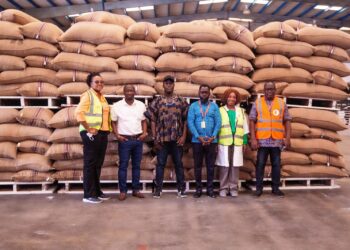Ghana’s Producer Price Inflation (PPI) dropped sharply to 5.9% in June 2025, marking the lowest year-on-year rate since November 2023, according to the Ghana Statistical Service (GSS).
The figure represents a significant 4.2 percentage point decline from the 10.1% recorded in May 2025 and a steep 19.7 percentage point fall from the 25.6% registered in June 2024.
This also marks the fifth consecutive month of easing producer inflation, pointing to a sustained reduction in the cost of goods and services at the production level.
On a monthly basis, producer prices deflated by 1.4%, indicating that businesses, on average, received lower prices for their output in June compared to May.
Presenting the data in Accra on Wednesday, Government Statistician Dr. Alhassan Iddrisu attributed the continued decline to price moderation across key production sectors, including industry and services.
He explained that this could provide relief for both businesses and consumers—if producers pass on the cost reductions.
“The data shows a steady decline, with the lowest producer inflation recorded since November 2023,” Dr. Iddrisu said. “Mining and manufacturing were the biggest drivers of this drop, along with easing costs in the transport and hospitality sectors.”
He urged producers to reassess their pricing models and find innovative ways to maintain competitiveness amidst shrinking margins.
The GSS also called on government to “lock in stability, boost production, and support key sectors like mining and manufacturing with smart incentives.”
As producer input costs continue to decline, there is growing hope that consumer prices may ease further in the coming months, easing pressure on households and supporting broader economic recovery.
The PPI measures the average change over time in the prices received by domestic producers for their output, excluding taxes and intermediary costs.
The current figures use March 2020 to February 2021 as the base period.




































